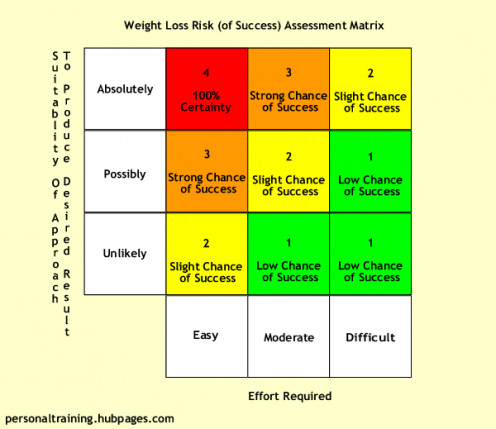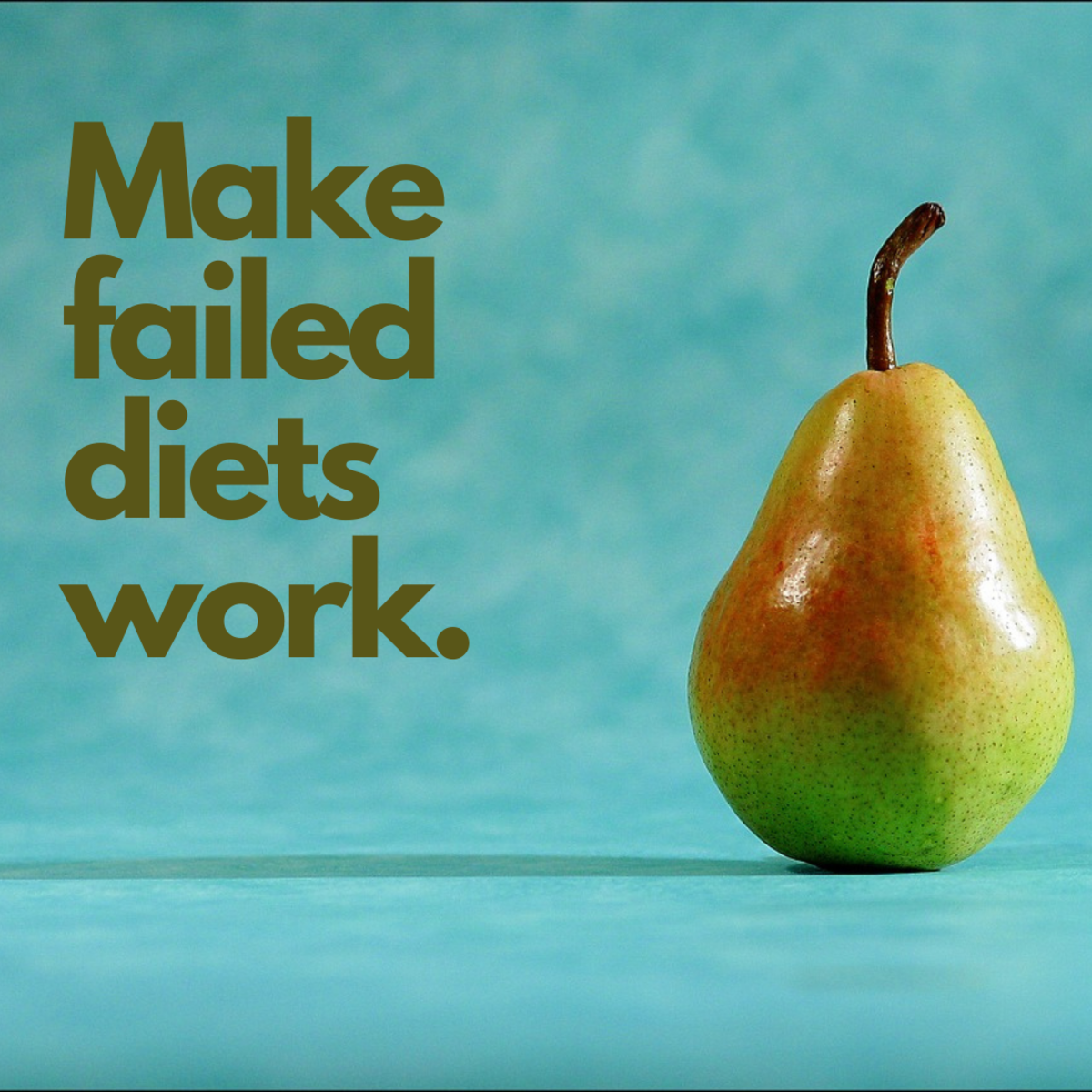Risk Assessment And Weight Loss Programs

If you've had a look at my profile, you might already know that before I was a Personal Trainer, I had a career in the Security Industry. In this article I combine both of these vocations by applying the Risk Assessment Matrix while considering a Weight Loss Program.
Aside from being a Personal Trainer and Weight Loss Specialist myself, a part of my prior career involved risk assessment and risk management. Now, if you're familiar with the Risk Assessment Matrix you'll know that it is a tool used to assign a level of importance or urgency to a particular risk of incident. After a proper risk assessment, a potential hazard that seems relatively unlikely may be assigned a high level of importance due to the catastrophic consequences should it ever happen. As an example, a high rise building would have an evacuation procedure and fire drills on a regular basis. The likely hood of ever having to put these procedures into practice in a emergency situation is actually quite remote, but to be caught unprepared in such an event would surely be catastrophic. As such, this risk is be given a high priority and taken very seriously.
Back to the issue at hand though, and we can use a similar process to assess the likelihood of successful long term weight management through a range of methods. Here's a graphical representation that I made earlier today.

As we're assessing the likelihood of a desirable outcome here, the higher the score, the better.
Let's start at the top, with the red square with a score of 4 and “100% certainty” of success. You can see that this square sits nicely in the “Easy” column, while also sitting nicely in the “Absolutely” column. You can see why it scores so high, being both easy and absolutely certainty of success!
The bad news? This doesn't actually exist.
Sadly this is what a lot of weight loss subjects are looking for, and there's no shortage of unscrupulous marketers out there ready to take advantage of them. We don't really need to go into this in depth, suffice to say that any of these methods that don't require any effort (just pop a pill, for example) are not going to work.
Let's continue with the things that we're almost certain will not work. Ironically, these are actually the methods that even more people will attempt to employ in the hopes of reaching a healthy weight. We'll start at the opposite end of the graphic, with approaches that manage to be both difficult AND unlikely to produce the desired outcome.
An example that meets both of these criterion would be the usual overly restrictive diets that many people go on and off. We all know, by definition a diet is a temporary measure that cannot produce a long term result. Aside from being impossible to stick to for any significant length of time, these restrictive (also known as VLCD, or as I call them “starvation”) diets promote a hormonal response that is actually unfavourable for reducing body fat. So, a method that is difficult to follow, and unlikely to work anyway.
In the square above, we assign the same low score to any method that does have some chance of success, but is unnecessarily difficult to implement or stick with. Something that's not so hard to stick to but equally unlikely to produce results is no better either, as represented in the middle square on the bottom row.
On to the yellow squares, let's sum them up as follows; in the first square on the bottom row we have your “well, I guess it is easy enough and if you stick with it for long enough then maybe” type of approaches to weight loss. One across and one up, medium difficulty and some chance of success. This might mean putting in a decent effort but with a less than ideal choice of exercise, or perhaps doing the right thing at training without enough attention on nutrition. Your chances are still hit and miss at best.
Finally in the last of the yellow squares we give a slight chance of success to anything that is just too difficult, despite otherwise being a flawless strategy. If you eat and train like an elite athlete, you're bound to end up super fit and with a great physique, but is this approach really required for the average weight loss client? Can you expect someone who is currently unfit and overweight to handle this sort of training regime? It's just unrealistic.
Now! All that's left is our two orange squares indicating a “strong chance of success” with a score of 3 out of 4. For the first square in the “possible” row, we're thinking of any strategy that has some chance of success, and doesn't really require too much effort. It's not the perfect system, but if you stick with it for long enough you'll get somewhere.
The remaining square happens to be the one I would recommend as best describing the attributes of a successful weight loss program. We're in the “absolute” column for suitability, which can only apply to an exercise and nutrition program that is appropriate to the desired goal. The effort required is “moderate”, which means that you do have to train hard and stick with the program... but it is a realistic plan and not terribly difficult to do so.
These are the questions we should be asking when choosing our weight loss program; will I be able to stick with it, and will it actually work if I do?
The answer to both questions needs to be “yes”.
Related Articles
- Building a successful weight loss program.
This article looks at the reason why people are overweight or obese in the first place, and discusses how to build a weight loss program that ensures success. - Lose Weight, Be Happy and Healthy
As a Personal Trainer, I seem to get asked the same questions regarding weight loss over and over again, and often by the same people as well. I thought it might save some time to just write up an article about what most people seem to be doing wrong








